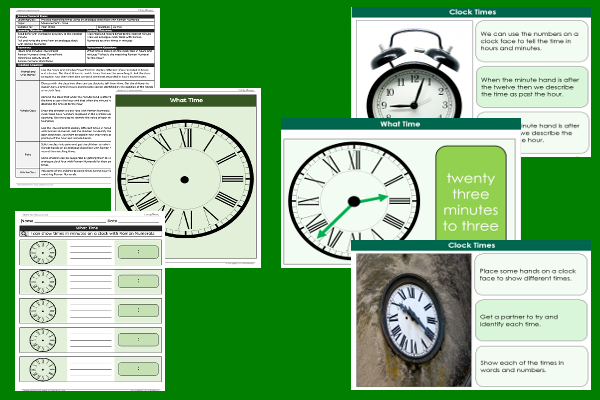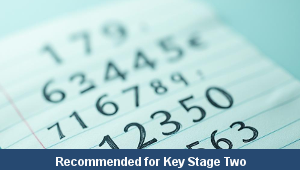Lesson Four – Roman Numeral Times

This maths teaching pack for Key Stage Two gets the children to practise selecting and recording some different times in minutes using analogue clock faces with Roman Numerals that are used to display each of the steps in hours.
The class can select different times in minutes to display on a clock face with Roman Numerals for a partner to identify and write the matching times in words and digits.
Download this teaching pack including a lesson plan, classroom activities and an interactive presentation to practise selecting and recording some different times in minutes using analogue clock faces with Roman Numerals that are used to display each of the steps in hours
Activities in this teaching pack include a template to practise recording times in minutes using an analogue clock face with Roman Numerals and a worksheet to select and indicate different times in minutes using some analogue clock faces with Roman Numerals to indicate each matching time.
The interactive presentation gets the children to explore how to record different times in minutes using some analogue clock faces with Roman Numerals.
This lesson is part of a maths scheme of work to get the children to identify and record different times on analogue clock faces to minutes and use Roman Numerals to show the timing and duration of events. There are teaching activities for shared learning, differentiated worksheets to support independent learning and interactive presentations to introduce concepts and key skills.
-

Maths Arithmetic Assessment
Assess abilities in solving arithmetic number problems for addition, subtraction, multiplication and division when working with informal and formal written calculations
-

Environment
Identify and describe some of the special landscapes and locations that can be found in the world and reflect on how they can be protected and preserved for the future
-

Silent Letter Words
Explore and illustrate the meanings and spellings of some different words with silent letters when using them in a range of topics and scenarios
-

Complaint Letters
Explain and model how to format and structure writing when composing letters of complaint about different issues and scenarios
